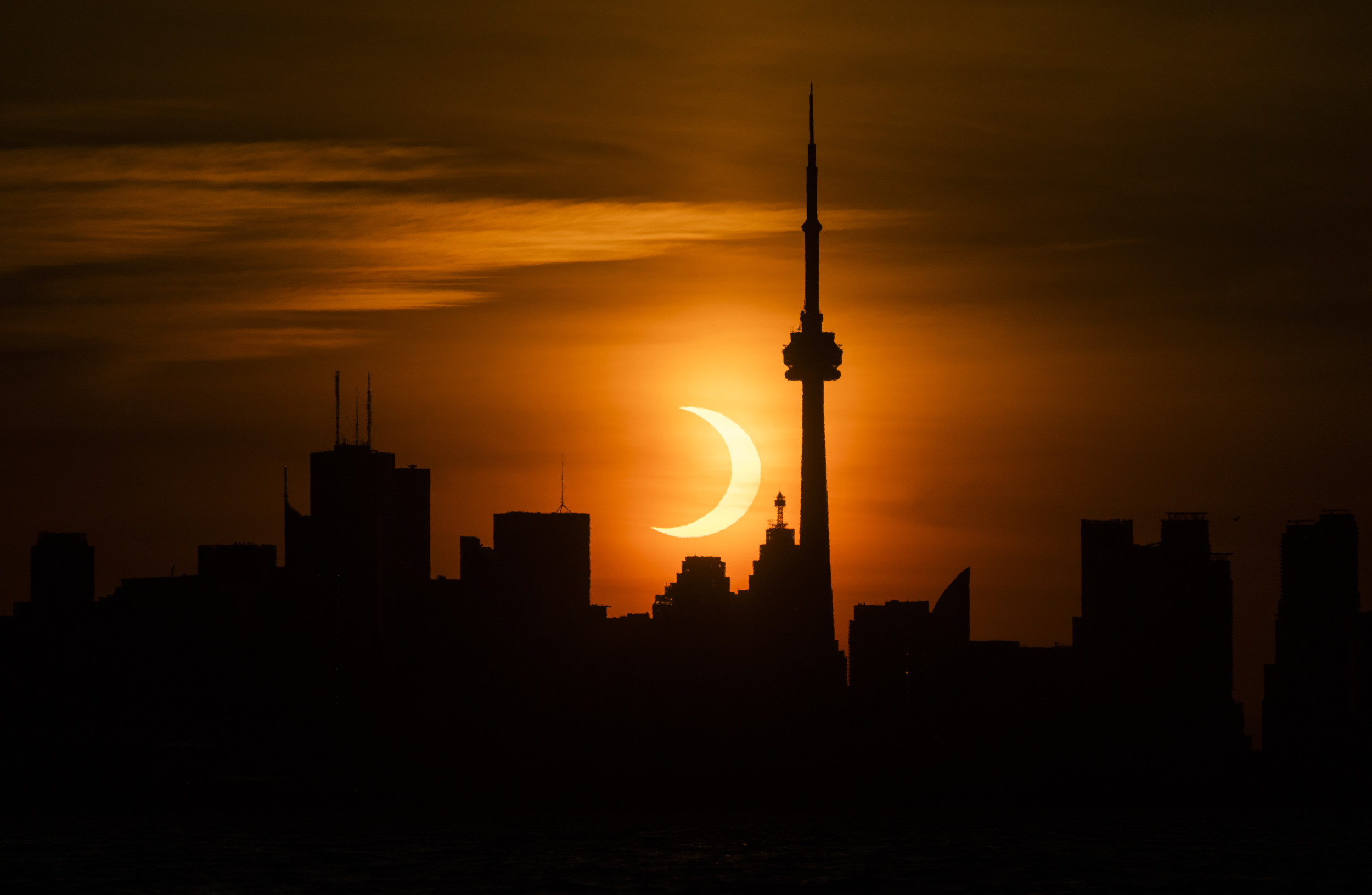The last solar eclipse of 2023 will begin traveling along its path over the U.S. Saturday morning, but weather experts say cloudy conditions will likely impact many Americans’ ability to see it.
This solar event will be an annular solar eclipse, which means the moon will be far from Earth along its orbit and will thus appear smaller than usual. When the moon passes in front of the sun, it won’t completely cover it—instead, a circle of light will surround the moon, a phenomenon that inspired the eclipse’s “Ring of Fire” nickname.
The annular solar eclipse will begin passing over the U.S. in the Pacific Northwest. It is forecast to begin in Oregon at 9:13 a.m. PDT, according to NASA. The eclipse will then travel southeast until it leaves the U.S. in southern Texas at 12:03 p.m. CDT, after which it will pass over the Gulf of Mexico before moving over parts of Central and South America.
People who are along the eclipse’s path of annularity have the best chances of seeing all of its phases, though everyone in the contiguous U.S. should be able to see part of the eclipse, NASA experts say. But cloudy conditions could interfere with viewing plans, starting with areas near the eclipse’s U.S. entrance.
Speaking with Newsweek by phone Friday afternoon, AccuWeather senior meteorologist Mike Doll said the Northwestern U.S. is expected to experience “quite a bit of cloud cover.” People in the metro areas of Boise, Idaho; Seattle, Washington; and Portland, Oregon, “are not likely to be able to get to see the eclipse” due to cloudy conditions. These areas will have the “worst conditions” for eclipse viewing, he said.
Cloudy skies have also been forecast along the East Coast, according to the National Weather Service Prediction Center, which posted a map showing its cloud forecast for the eclipse on X, formerly Twitter.
Better viewing conditions are expected in the Central and Southern Rockies, the Southwestern U.S. and the Southern Plains. In Salt Lake City, Utah, forecasters don’t expect conditions to be “completely overcast,” but there likely won’t be enough breaks in the clouds to watch the eclipse, Doll said. Cloudy conditions are also in the forecasts for Las Vegas, Nevada; Phoenix, Arizona; and Albuquerque, New Mexico, but these areas are expected to have “pretty good viewing conditions,” he said. Texas’ major cities are also expected to experience strong views.
Solar and weather experts are reminding those who plan to watch the eclipse to do so safely by using special eclipse eyewear or homemade tools, such as pinhole cameras, that are designed to protect the eyes from the sun. NASA has instructions on its website that walk people through the steps of making a pinhole camera using card stock, aluminum foil and tape.
For those who won’t have optimal viewing conditions, NASA will be streaming the eclipse live on its YouTube channel.
This will be the last eclipse of 2023. The next such event will be a total solar eclipse, which will occur on April 8.

